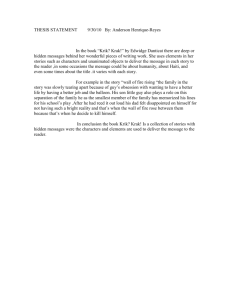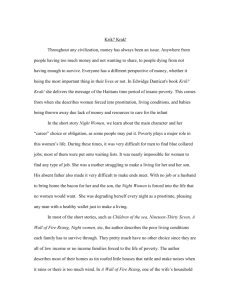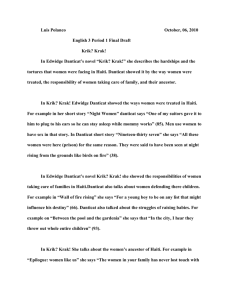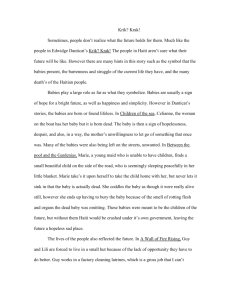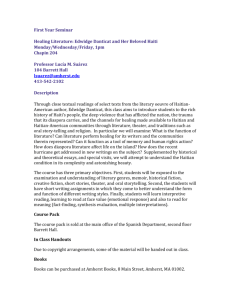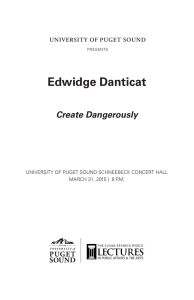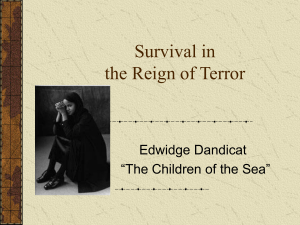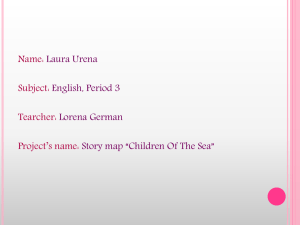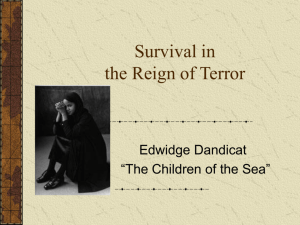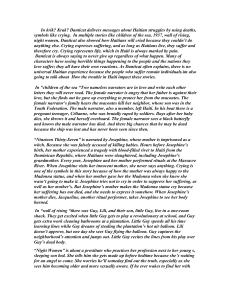Edwidge Danticat Krik? Krak!
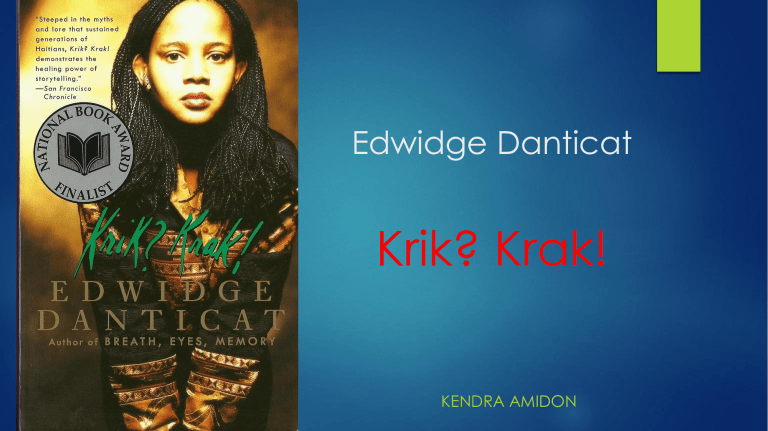
Edwidge Danticat
Krik? Krak!
KENDRA AMIDON
Edwidge Danticat
Born in Port-au-Price, Haiti in 1969
Her parents left for America when she was an infant and she was raised by her Aunt and Uncle in
Haiti
Went to America at the age of 12 and lived in a Haitian-American neighborhood in NY
Writing was her solace from her identity disorientation
Main Themes
Gender
Water
Voudou (Religious Symbols)
Lineage and preservation of history
Passed mostly from mother to daughter through oral story telling
Danticat’s Style
Colloquial style
Story telling within the story
An oral story is usually explained to the main character of something happening in the past
This leads into the title “Krik? Krak!”
Historical/Religious symbols
As a post-colonial narrative tool, there is a mix of Catholicism and
Voudou and historic events that are not often explored outside of Haiti
Focusing on one family/character and how that event related to that person
“Children of the Sea”
Written as corresponding letters
The boy, a member of the liberation front, has fled Haiti on a boat
The girl has been stuck in Port-au-Prince, listening to the violence of the macoutes
The letters are never sent to one another
(Butterflies as symbols)
“Nineteen Thirty-Seven”
Josephine visits her mother in prison, recalling memories with her mother
Yearly pilgrimages to “Massacre River” on
Josephine’s birthday
The day that Dios Trujillo had ordered Haitians in the Dominican Republic be slaughtered
The lineage of the women whose mothers were killed in the Dominican Republic is preserved
“Sister…life is never lost, another one always comes up to replaced the last” (48).
“Night Women”
A prostitute practices her profession in the same room as her sleeping son
Her struggles as a mother trying to provide for her son and also shield him from the reality of her work
“Shadows shrink and spread over the lace curtain as my son slips into bed. I watch as he stretches from a little boy into the broom-size of a man, his height mounting the innocent fabric that splits our oneroom house into two spaces, two mats, two worlds” (83).
“Between the Pool and the
Gardenias”
Marie finds a dead baby in the street and names it Rose
She cares for it to fill the void after her miscarriages
She tells the baby stories about her female ancestors
She pretends that she is not the servant in the foreigner’s household, but that it is hers.
She makes up a fantasy life with the man she had an affair with once and Rose as their child
The man she had an affair with finds her finally burying the baby and calls the gendarmes, accusing her of witchcraft and killing the baby for evil purposes.
